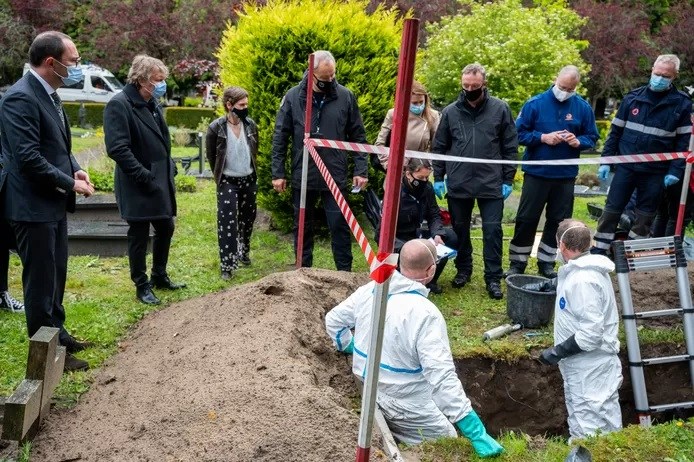The Missing Persons unit of the federal police has begun carrying out what is being called Operatie Kerkhof (Operation Graveyard) – opening up 250 graves of people buried without a name, in an attempt to solve some of the country’s open missing persons cases.
Belgium has 759 outstanding cases of unexplained disappearances. Some of them have been well-publicised, others not at all.
One of the better-known cases is that of Nathalie Geijsbregts, who went missing aged ten on her way to school in 1991. Five years, on the 25th anniversary of that date, her mother Anita Pintjens described to Het Laatste Nieuws the feelings ever new initiative brings.
“After 25 years, a person can no longer hold out very much hope, can they. In all those years so many criminals have passed through: Dutroux, Fourniret, Ronald Janssens. There was always hope for a breakthrough. But again and again that great disappointment followed. In the long run, you don't believe anything any more, and you completely lose faith in a breakthrough.”
The breakthrough hoped for from this new operation relies on DNA, a technology that wasn’t available to police when Nathalie went missing. The plan is to open up the 250 graves that are the last resting place of people who died and were buried without being identified.
The police will take a DNA sample from the grave, which will then be compared with the growing DNA database. The hope is that the fate of at least some of the 759 missing persons cases still open will be identified.
“We cannot guarantee the families of a missing person that we will find their loved one. But we want to do everything we can,” said Alain Remue, who has led the Missing Persons unit since it was created in 1995.
At that time, the disappearance of two missing eight-year-olds, Julie Lejeune and Mélissa Russo, had the country in an uproar. As a result, the cases of other missing children, including Nathalie, came into the headlines.
Julie and Mélissa, sadly, had become two of the victims of serial killer Marc Dutroux. What happened to Nathalie remains a mystery.
The DNA database was set up in 2018, and consists of DNA samples from all persons reported missing where available, and if not from close relatives. It can then be stored and referred to whenever unidentified remains are discovered.
“Sometimes we can rely on the pillow of a missing child, other times on a saliva sample from the mother,” Remue said.
“My last glimmer of hope is a DNA match,” said Anita Pintjens, speaking again to HLN.
“Imagine that there is a match. Then we will finally know where Nathalie is. I think to myself: you have to grab on to every straw. Of course I hope for a breakthrough. But it is a tentative hope. We've already seen too many setbacks.”

